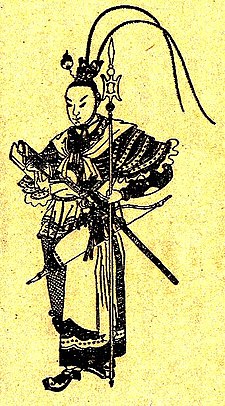I interrupt the torridity of the past few posts, hypothetical reader, with some totally sweet entries from Yuan Mei's Sui Yuan Shi Dan (Food Lists from the Garden of Leisures).*
Some of them are almost as complicated/$$$ as the intricate recipes given in Cao Xueqin's The Dream of Red Mansions, with meat broths flying all over the place, crazy ingredients, and whole days spent stewing:
Sea Delicacies: Three Recipes for Sea Cucumber **
The sea cucumber is a flavorless thing, full of sand and fishy flavor, and is most difficult to pull off well. [Begging the question why anyone would want to attempt to eat it.] Its nature is thick and heavy, so simmering in a broth is out of the question. One must pick out those with smaller spines [clearly a sign from nature reading NOT FOR PEOPLE TO EAT in giant pointy font], soak out the mud and sand, bring them to a rolling boil three times in meat soup, then broil them in chicken and meat stock until they are thoroughly softened. For accompaniment use fragrant mushrooms and wood-ears [Auricula judae]; their black color will match well with the sea cucumber. If one is inviting guests on the morrow, then the cooking must start a day before for the sea cucumber to be completely soft. I've often seen them use mustard-seeds and chicken stock to make sea cucumber salad at Qian Guancha's house, which is very nice. They've also had sea cucumber cut into small pieces and stewed with small pieces of fragrant mushrooms and bamboo shoots in chicken stock. Assistant Secretary Jiang's household uses tofu sheets and shaggy mane mushrooms [NB: they probably grow on your lawn] in stews with sea cucumber, which is also good.
Some are a little more down-to-earth and sound even manageable by yours truly:
Snacks: "Dough Mice"
Use hot water [and flour, presumably] to make some dough, then boil chicken broth and use chopsticks to pinch off and drop in pieces of various size. Add some fresh cabbage hearts for an especially good flavor.
Some are flat-out cute:
Sweets: Roly-Poly Candies
Shaped like go pieces, these come in all colors. The people of Hangzhou give them to children, who think them to be treasures.
And some are crotchety, as befitting a seventy-something "I aced the exams but now I live like a king by writing poetry all day"-type hippie:
Sweets: "Persimmon Cakes"
Persimmon cakes are sweet but boring. I've never eaten a good one, and they're far inferior to tangerine cakes.
This would probably cause YM and my father to have a showdown, because latter thinks persimmon cakes are as unto the nectar of the gods.
Finally, there are some very, very strange entries:
Sea Delicacies: Fish Lips
Fish lips are heavy in texture but pure and light in quality. To retain their peculiar charms, lightly stew in chicken stock.
[A helpful note in the source indicates that YM is referring to "dried food products made from the lip areas of sharks and rays." I never knew these possessed lips--maybe someone played a little trick on zoology-impaired YM here for an extra bit of metaphorical dough. But apparently now I'll get to make really stupid jokes involving cosmetics and cartilaginous fishes!]
Conclusion: chicken stock will cure all ills, be they sandy or probably made-up.
*(See here for the original text.) OMG, major discovery. I've only seen this book rendered as the Sui yüan shih tan before--and I and apparently every other native English speaker to look at this thing (I can't imagine there are too many beside Arthur Waley and Herbert Giles himself) totally thought the tan was the nice, friendly 谈, "discuss" or "talk," but no, it's the much more businesslike 单, "list"! Probably the pervasive desire to cast my homie YM as an über-hip Renaissance Man striking again. ***
**A picture of these little fellers for your edification and/or revulsion:

***A perfectly understandable urge. YM be pimpin' it up, yo (Twelve concubines? Hottest boytoy--uh, protégé-- in town? A poetry school for "moth-eyebrowed" young ladies of good family? Mmm-hm, I think so).






.jpg)










